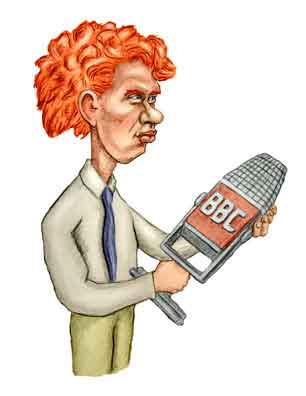Dylan Thomas

Dylan Thomas
Neither Women nor Macintoshes nor Women
"When he says 'Dylan', he thinks you're talking about 'Dylan Thomas', whoever he was. The man ain't got no culture."
- Paul Simon, A Simple Desultory Philippic (Or How I Was Robert McNamara'd Into Submission)
Actually, Dylan Thomas is probably better remembered than Paul Simon's dated (and for the time no doubt terribly funny) satire on the songs of Robert Zimmerman. In any case, those who do have culture will know Dylan (Thomas, that is) as the Welsh poet whose poems like "Fern Hill" and "Do Not Go Gentle Into That Good Night" will strike even the non-poetical as worth reading (at least if they do have culture).
Dylan began publishing his poetry in the early 1930's and quickly became well known in the English literary circles. Soon he was invited to recite his poetry on the BBC. The lyrical verse recited by his booming crisp voice soon propelled Dylan to become that true rara avis, the celebrity poet.
Dylan found the praise of critics didn't pay the bills very well, particularly after he married and started raising a family. So he made a living by writing for newspapers, magazines, and radio as well as taking the job as the occasional handyman. And as many aspiring authors did, he also sponged a bit off his friends. None of these jobs are necessarily bad ones for a beginning poet, but neither do they pay particularly well.
So Dylan went off on lecture tours in England and America. He was always good copy and might tell reporters he came to town because he was looking for women in wet macintoshes (that's the raincoat, not the computer). He played the part of the eccentric, hard-playing, hard-drinking bohemian to the hilt. Falling victim to his self-crafted image, he could come off to his hosts both as either an intellectual bon vivant or as a pain in the rear end (and sometimes both). But it was his drinking and fiddling around that made it increasingly difficult to function as either a poet or a lecturer and which raised the ire of his wife, Caitlin, who became permanently soured on America.
The oft-recited story of the death of Dylan from drinking eighteen straight whiskeys does not need retelling, mainly because it probably isn't true. Yes, he may have said he did, but it's not likely he did. Instead recent research indicates he had in fact been suffering from bronchitis. But due to pressures of his lecture tour and the staging of his play "Under Milk Wood", he didn't seek any medical attention. He also tried to keep up with his hard partying regime, but found it increasingly difficult even to stir from his hotel room. His symptoms - fever, sweating, shivering - were similar to that of delirium tremens - the DT's - that is, severe alcohol withdrawal. After being treated by morphine (sedation was a common treatment) and now suffering from pneumonia, Dylan soon lapsed into a coma. He died the four days later on November 9, 1953. He was thirty-nine.
References
Dylan Thomas: A New Life, Andrew Lycett, Overlook Hardcover (2004). The most up-to-date and probably best biography of Dylan Thomas. Andrew also wrote an excellent biography of Ian Fleming, the creator of James Bond.
Fatal Neglect: Who Killed Dylan Thomas?, David Thomas, Seren Books/Poetry Wales Press Ltd, 2008. This tells the revised story of Dylan's death in a convincing manner.